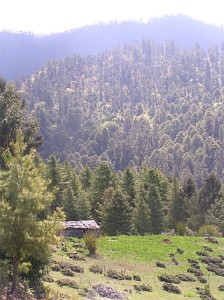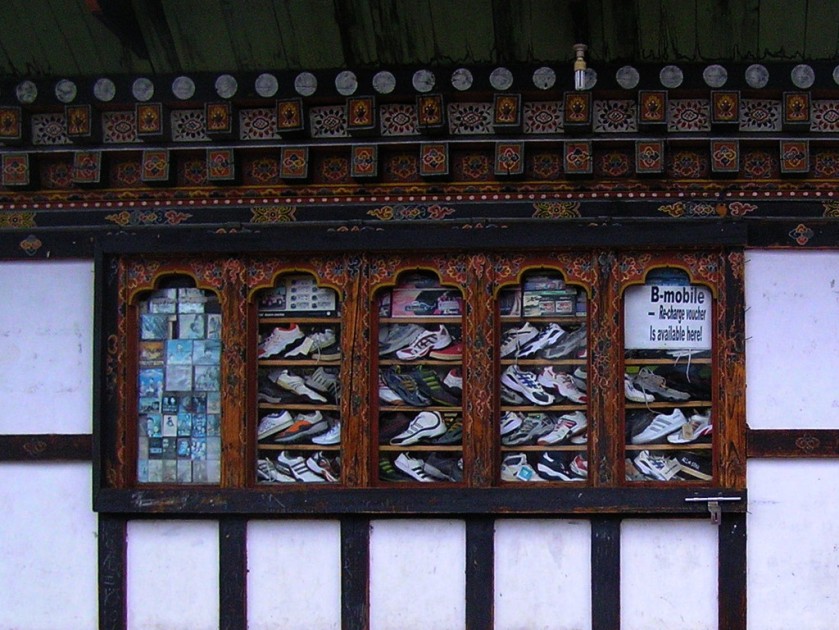Bumthang district is associated with the founding stories of the Bhutanese state and religion. The first kings arose around the Trongsa region, and defeated the Tibetan kings in the White Bird’s Castle. Padmasambhava is said to have come to Kurje Lhakhang to meditate, and left many treasures which are said to have been found later by Pema Lingpa.
We arrived at the massive complex of Kurje Lhakhang late in the day. In the photo above you can see this complex, and in the background you have a view of the nearby Jambey Lhakhang. The two massive buildings you see on the right were built in the 20th century CE. The older, low, building on the left is called Guru Lhakhang, and dates from 1652. Apparently the local king, called Sindhu Raja, called Padmasambhava to help him when he fell ill. On arriving, the Guru meditated inside a cave (now inside the Guru Lhakhang), and realized that the illness was due to a local demon. An imprint of the Guru’s body is said to be found on the stone of the cave. A carving of a Garuda fighting a white lion in the building is said to depict the story of the Guru subduing the deity. The king recovered, converted to Buddhism, and the deity is now supposed to guard the religion. Unfortunately the building was closed when we arrived.
We had a lovely view of the surrounding valley from the Lhakhang. It was evening and mist was settling into the valley. There were occasional gusts of rain. We walked around the complex and met a young monk who could speak Hindi well. He told us the story of the place. He told us that we could walk either to Jambey Lhakhang or to Tazhing Lhakhang. We’d not read about Tazhing Lhakhang. When he realized this, he told us a little about the place, and about Pema Lingpa.
The Bhutanese name Pema is a cognate of the
Sanskrit word Padma, meaning lotus. Men and
women can have this name.
Pema Lingpa is one of the biggest names in Bhutanese Buddhism, next only to Padmasambhava, who brought Buddha’s teachings to the Himalayas. He was born in the Tang valley of today’s Bumthang district in the year 1450 CE. I learnt that he practised as a blacksmith till he was in his mid-twenties, and then turned to discovering religious scriptures. He is now known as a terton, a treasure hunter, because of such discoveries. Numerous sites in Bumthang district are connected to him. We’d already visited the Mebar Tsho the day before.
Tamzhing Lhakhang was built between 1501 and 1505 CE at the behest of Pema Lingpa, who lived and taught there until his death in 1520. Following the monk’s advice, we crossed the river and walked to this Lhakhang. This was also closed, and we did not see the paintings which are now, a decade later, apparently in dire need of restoration. Our two days in Bumthang resulted in three hits and four misses. I thought that was not very good. But The Family looked at our bird list and declared that it more than made up for the art work that we missed. Not so bad, I guess. This gives us a reason to go back.
















































